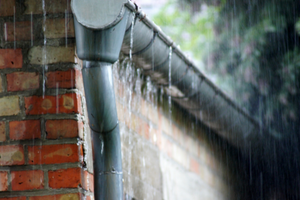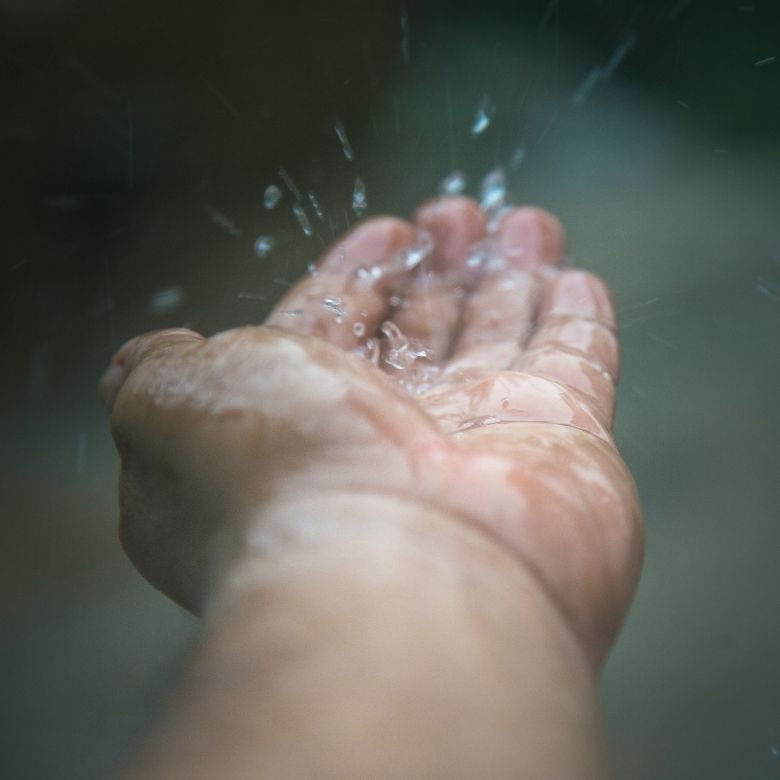The Earth is drying up extremely fast. This is due to many reasons, but the most serious are: global warming and the uncontrolled use of drinking water for the needs of industry and households. In the last few decades, the problem of saving water has become a priority for many countries. The resource value of rainwater has been rediscovered and collecting water from the rain gutter has become very popular. How to collect rainwater? Here are some practical tips.

Collecting rainwater from gutters – why is it so important?
We humans waste millions of tons of litres of fresh drinking water each day. It is used in homes, gardens, factories, and on farms and plantations. Meanwhile, water resources are shrinking so much that already approximately 40 percent of the world’s population suffers from scarcity. Currently, even seemingly minor to conservation measures to save rainwater are very important, e.g.: collecting rainwater from rain gutters and rooftops. Why is it worth it? There are lots of reasons – to begin with, when we collect rainwater:
- we save water from the water supply system,
- we pay lower water bills,
- we obtain a high-quality, natural plant care and nutrition agent,
- by regularly watering plants with rainwater, we reduce the risk of local drought.
Collecting rainwater regularly is an ecological and economic habit that pays off in more ways than you might think. It is an investment in the future of the next generations and an effective and very simple way to combat the growing phenomenon of drought.
Can you collect rainwater? What does Polish law say about it?
Is collecting rainwater in tanks legal? Polish law does not prohibit the storage of rainwater for the needs of households and companies. However, it is worth paying attention to some issues:
- how is the collected water reused?
- how many cubic metres of water are we going to store?
In Poland, each building plot should be equipped with a rainwater drainage system guided to a storm sewage system or to unpaved areas, e.g., to drainage ditches (if there is no possibility to connect to the sewage system). It is forbidden to pour rainwater on the streets or pavement or to guide it to the sanitary sewage system. Moreover, the construction of large reservoirs whose capacity exceeds 10 m3 usually requires obtaining an appropriate permission.
Detailed information on rainwater collection is included in the following legal acts:
- The Act of July 20, 2017, Water Law,
- The Act of July 7, 1994 Construction Law,
- Regulation of the Minister of Infrastructure of April 12, 2002 on technical conditions to be met by buildings and their location,
- The Civil Code.
How is rainwater collected from the rain gutter? Some important aspects
Collecting rainwater from the roof and rain gutters is not a complicated or a very expensive investment. However, there are a few things to consider before we go to the store to buy the tanks:
- How much roof area do we have and how much water do we want to ultimately collect?
- Do we want to use rainwater only outside or also inside the house?
- How much space do we have to set up external tanks and how to integrate them into the existing surroundings?
- Can we apply for funding for the purchase of barrels and irrigation installations?
In some cases, the construction of installations for collecting rainwater requires the involvement of a designer. An expert makes a visual inspection of the roof and the area, and then develops a rainwater drainage project.
Two proven ways to collect rainwater from the roof
How is rainwater collected in the garden? There are two methods of collecting rainwater:
- METHOD 1: (the simplest and most cost-efficient): collecting water from the roof directly into barrels, placed at the gutters, equipped with catchers.
- METHOD 2: (more advanced) collecting rainwater using above-ground and underground installations designed for the storage and distribution of water.
Both presented methods of collecting rainwater are very popular and more and more often used in households as well as in modern companies open to new, ecological technologies.
Rainwater in the garden: where to store it?
Collecting rainwater from the gutter is child’s play, because only the connection of a catcher to the tank is required. The rainwater can be stored in special containers with a capacity of 120 l, 200 l, 300 l, etc. These are ceramic or plastic barrels, equipped with a tight lid and a tap for easy dosing.
How to collect rainwater in the garden during heavy rainfall? For this purpose, it is worth to buy additional, above-ground mausers, into which you can pour water manually or using a pump. In case of underground installations, rainwater goes into tanks located in the ground. The excess water is collected in the sewage drains.
Collecting rainwater – how to keep the rainwater in the tank clean?
Rainwater is undoubtedly of high quality. It is because it is soft and is perfect for watering plants. How to maintain the desired properties of rainwater? What should be done to prevent the proliferation of harmful algae, bacteria and fungi in warmed-up tanks? There are several effective solutions to collect water from the roof and eliminate the risk of microbiological growth – these are:
- nets and covers for open tanks – prevent biological contaminants from entering the water,
- overflow filters for gutters and manholes,
- clarifying and treating preparations for rainwater (powders or liquids that do not contain chlorine and contain beneficial bacteria).
It is worth noting that collecting rainwater makes sense when we use water for watering plants or cleaning works on an ongoing basis. On hot summer days, open barrels with rainwater warm up quickly, which promotes decay. How can you tell if rainwater decays? An unpleasant smell and a cloudy, greenish shade are warning signs.
Collecting rainwater in the garden: how to use the water supply?
We already know how to collect water from a rain gutter. But how can it be used? Soft water is great for:
- irrigating lawns, shrubs, flower beds and vegetable beds,
- cleaning parquets, floors, car bodies,
- preparing home-made hair rinses.
It is worth using rainwater especially in crisis situations, when there is no water in the municipal water supply or when the authorities prohibit watering gardens and other green areas due to drought.


